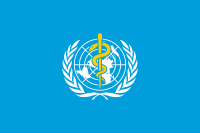
Photo from wikipedia
Objective To investigate the differences in the awareness, knowledge, and management of osteoporosis from a cohort of medical staff after educational intervention. Methods A total of 653 medical workers from… Click to show full abstract
Objective To investigate the differences in the awareness, knowledge, and management of osteoporosis from a cohort of medical staff after educational intervention. Methods A total of 653 medical workers from different departments related to the prevention and treatment of osteoporosis from 7 hospitals in Ningxia were enrolled. Information was collected using a designed questionnaire. Results After 5 years of educational intervention and follow-up, medical staff had an increased understanding of osteoporosis diagnosis, including dual-energy X-ray, ultrasound bone sonometer, fragility fracture history, biochemistry markers, and the awareness of the susceptible population. However, there was no improvement in the cognition of single/dual photo absorptiometry, symptoms and signs, and bone turnover index. Their understanding of antiosteoporosis drugs, especially the application of calcitonin, diphosphates, and vitamin D, was significantly promoted, while the perception of indicators and time in follow-up, some adverse drug reactions, and exercise therapy remained unchanged. Medical staff were remarkably less aware of the management of follow-up for osteoporosis, exercise and diet therapy, and bone turnover markers. Conclusion A great gap was identified in the perception of osteoporosis among medical staff in the Ningxia region. After the educational intervention, the knowledge regarding some aspects of osteoporosis generally improved. Much more effort should be made to strengthen the training and learning on the special detection methods of osteoporosis, medications and exercise therapy, and follow-up management.
Journal Title: Computational and Mathematical Methods in Medicine
Year Published: 2022
Link to full text (if available)
Share on Social Media: Sign Up to like & get
recommendations!